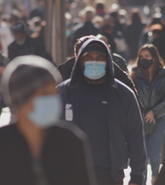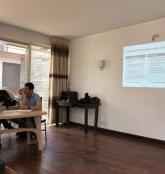19:00 UTC Monday, September 11
Tom Sabbatelli, hurricane risk expert – RMS
Irma is a hurricane no more: following a Category 3 strength second Florida landfall near Marco Island, south of Naples, the storm’s intensity rapidly faded as it traveled to the north and west overnight. Irma now only maintains tropical storm strength as it crosses northern Florida. Expect to see further commentary on the storm’s rapid decay from my colleagues in the RMS HWind team later today.
Irma’s landfall and overnight track has allowed RMS to narrow yesterday’s stochastic event selection. A landfall eliminates offshore track scenarios that produce lower levels of onshore wind but higher levels of storm surge hazard along Florida’s west coast. Irma’s passage to the east of Tampa reduces the risk of significant storm surge levels and loss near Tampa Bay.
Initial damage reports indicate that damage may not be as severe as once feared, despite sizable roof damage in Naples and the Florida Keys.
As per the RMS Event Response process, our attention shifts from the regular, reactive stochastic event selections to a comprehensive interrogation of all causes of loss, both modeled and unmodeled. During Hurricane Harvey, my colleague Michael Young explained that one of the biggest challenges we face is collecting enough wind observations to create a complete picture of a storm’s wind field. Although our RMS HWind team have been collecting and processing data every three hours, we face these challenges with Irma as well. More data will become available in the coming days, which will enhance the accuracy of our wind field and surge modeling.
As part of our event response service, we have the following activities underway:
- Reconnaissance will help us narrow the uncertainty around what could be a potentially significant contribution to loss from storm surge and flooding. These efforts do not need to wait for boots to hit the ground, though; we have teams already scouring high-resolution satellite images to detail the exact extent of the flood waters and the underlying exposure at risk.
- Our RMS Field Recon team, fresh off their trips to Texas following Hurricane Harvey, are reactivating their reconnaissance plans. In the days ahead, their visits to cities across Florida will help reveal the depth of the flood waters and the extent of wind damage observed throughout the state.
You may have already seen that our colleague, Victor Roldan, has been documenting his experience riding out the storm from his home in Miami. Victor has reported that basements are flooded along Brickell Avenue, and area that was hard hit in Wilma, but wind damage is minimal.
Following a hurricane, power outages predominantly contribute to heightened business interruption and post-event loss amplification, which is possible in an event of this magnitude. As many as seven million customers in Florida may have been without power at one time, almost triple the peak outage observed during Hurricane Matthew.
Caribbean Impacts
Let’s not forget about the Caribbean islands left in Irma’s wake, still cleaning up and attempting to restore power and telecommunications several days after the storm’s initial impact. For instance, as many as one-quarter of customers in Puerto Rico remain without power four days after Irma’s passage. This prolonged restoration may prove to be a figure that could compound insured losses across the island. During their comprehensive review of the event’s lifecycle, RMS modelers will refine projections of the insured loss across all Caribbean islands, which is assumed will contribute materially to the total industry loss.
As the Event Response team now transitions from producing real-time event updates, they have many existing key data sources from which they can draw these critical observations. Ultimately, these insights will inform our official insured industry loss estimate, targeted for publication in approximately two weeks’ time.






